 Artwork by Ellie M. (Grade 6, Florida), winner of the Annual NOAA Marine Debris Program Art Contest.
Is it summertime yet?!
A lot is happening across the education community this month, including a brief period of rest between two of our favorite days of the year: Earth Day and World Ocean Day! I try to take time during this season to appreciate the blooms of spring and brainstorm for how to best support students and educators throughout the summer - whether they are on a school break or just getting into the busy season of summer programming.
Here’s what you can look forward to in today’s newsletter:
New Resources:
Student Opportunities & Highlights:
Educator Opportunities:
Career & Project Highlights:
Funding Opportunities:
Plus, we're solving the puzzle of what to do with outdated calendars by turning them into colorful jigsaw puzzles!
Enthusiastically,
Alexandria Gillen
NOAA Marine Debris Program Education Specialist
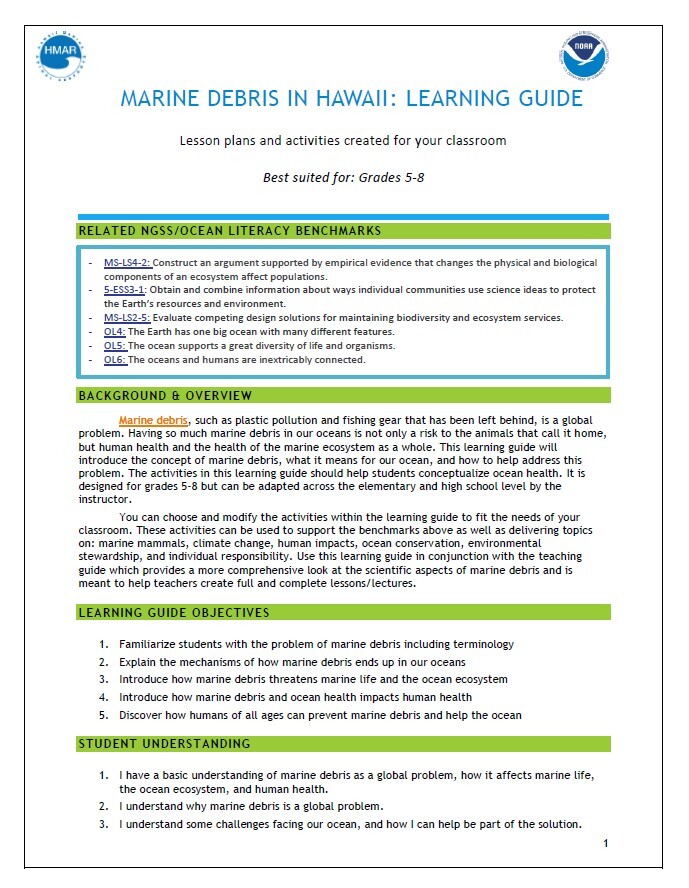 Explore the new, standards-aligned and hands-on resource available on the Marine Debris Program website (Credit: NOAA).
Hawai‘i Marine Animal Response (HMAR) produced these resources as a part of work supported by the NOAA Marine Debris Program to reduce the negative impacts of marine debris on protected marine species and coastal habitats of O‘ahu through the detection and removal of derelict recreational fishing gear. Team members from HMAR visited educators and students to help them answer the guiding question: What is marine debris, and how can students help prevent and manage its occurrence? With these resources, educators can support their students with lesson plans, hands-on activities, and background information that introduce the concept of marine debris, what it means for our ocean, and how to help address this problem. Check out the new resources here!
Best for: Middle School, Educators
Applicable Region(s): Pacific Islands, Anywhere
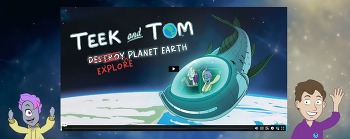 Explore planet Earth with Teek and Tom in NOAA’s first ever animated series! (Credit: NOAA).
Join the intrepid student explorer Teek from planet Queloz and NOAA climate scientist Tom Di Liberto as they explore planet Earth. This fun, science-driven, five-part series is designed for students in the fourth through sixth grades. The series guides students on how the ocean influences Earth’s weather and climate; weather extremes; the technologies scientists use to gather weather data; and what this information tells us about our changing planet. Dive into the new videos here!
Best for: Anyone, Elementary School, Middle School
Applicable Region(s): Anywhere
 Artwork by Hazel P. (Grade 3, Florida), winner of the Annual NOAA Marine Debris Program Art Contest.
What does it mean to be a woman in an ocean science career? What different career paths are available, and how does one get there? Perhaps you’ve thought about becoming a marine biologist, or you have an interest in marine policy, but aren’t sure which steps to take towards such a career. Maybe you’re passionate about ocean science and conservation and want to use your communication skills to influence others. Learn about some of the inspiring women working throughout the National Marine Sanctuary System here.
Best for: Anyone
Applicable Region(s): Anywhere
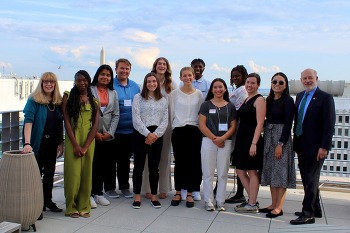 Waste reduction in schools and communities were some of many action projects undertaken by last year's Fellows (Credit: NOAA).
The Young Changemakers Fellowship is a year-long empowerment program for high school students. Fellows receive mentorship, skill-building opportunities, and support from NOAA to design and lead an action project in their own community. They also learn about how NOAA works and directly provide their perspectives on agency priorities to NOAA’s leadership team.
The fellowship is open to young people ages 13 and older who will be in high school during the 2024-2025 school year. Students living and attending school across the United States, U.S. territories, and tribal nations are encouraged to apply. The program welcomes students with a wide variety of interests, as well — aspiring artists, communicators, tech innovators, and educators are just as appreciated as budding scientists and future policy makers. Explore this opportunity here!
Applications due June 10.
Best for: High School
Applicable Regions: All U.S. States and Territories
 Artwork by Geonryul P. (Grade 1, Commonwealth of the Northern Mariana Islands), winner of the Annual NOAA Marine Debris Program Art Contest.
Former NOAA Marine Debris Program grantee, Bow Seat Ocean Awareness Programs, is proud to announce an updated opportunity for students! The True Blue Fellowship (formerly the Fellowship Grant Program) aims to connect and empower youth around the world to leverage the creative arts to enact change in local communities to safeguard the ocean, waterways, and the climate. If you want to make a difference in your community, Bow Seat invites you to participate in the True Blue Fellowship! The Fellowship is an initiative originally created and led by the Future Blue Youth Council (FBYC), a diverse group of Bow Seat alumni working together to empower their peers to advocate for a healthy, sustainable, and equitable future. Explore this opportunity here!
Best for: Middle School, High School, Non-Formal Audiences
Applicable Regions: Anywhere
 Marine debris is one of many issues facing estuaries that you can learn about in a Teachers on the Estuary workshop (Credit: NOAA).
A Teachers on the Estuary (TOTE) workshop is a research and field-based training program held at various research reserve sites. Teachers use TOTE to increase their understanding of estuary science, including climate change, and they learn how to engage students in the investigation of changes in their local environment using data obtained from the reserves’ monitoring programs.
The National Estuarine Research Reserve TOTE Workshops are underway throughout the U.S. Visit the TOTE calendar here to learn more about workshops taking place near you!
Best for: Educators
Applicable Regions: Throughout the U.S., see the TOTE calendar for details
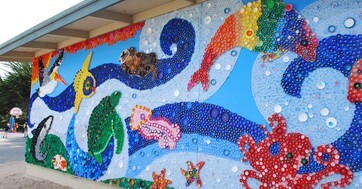 This creative mural, made of repurposed bottle caps, was created as part of an Ocean Guardian School project in California (Credit: Naomi Pollack/NOAA Ocean Guardian School Program).
There are two current opportunities for educators to get funding from NOAA for their learning environment! Both programs include focus areas for marine debris prevention.
-
Ocean Guardian School: An Ocean Guardian School makes a commitment to the protection and conservation of its local watersheds, the world's ocean, and special ocean areas, like national marine sanctuaries. The school makes this commitment by proposing and then implementing a school- or community-based conservation project. While any school can apply for projects without funding, funding is only available in select areas. Reach out to the contacts on the Application Page for more information.
-
Planet Stewards: Through federal funding opportunities of up to $5,000, NOAA Planet Stewards will support formal and informal educators working with elementary through college age students, and the public, to carry out hands-on stewardship projects. Stewardship projects must make a substantive, and quantitatively measurable impact on an environmental issue related to the educator’s community.
Ocean Guardian School application closes June 1.
Planet Stewards application closes June 2.
Best for: Educators
Applicable Region(s): All U.S. States and Territories
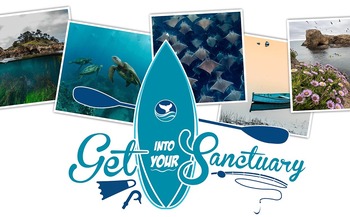 Explore and celebrate the world around you through the Get Into Your Sanctuary photo contest (Credit: NOAA).
In celebration of national Get Into Your Sanctuary activities, NOAA's Office of National Marine Sanctuaries holds a photo contest annually from Memorial Day weekend to Labor Day weekend. Show the world what the ocean and Great Lakes mean to you by capturing images of Sanctuary Views, Sanctuary Life, Sanctuary Recreation, Sanctuaries at Home, and Sanctuaries Around the World. See past winners and more information here!
Contest closes September 2.
Best for: Middle School, High School, Non-Formal Audiences
Applicable Region(s): Anywhere
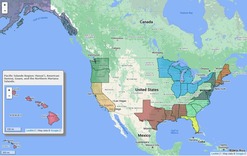
Check out marine debris projects around the country at the "In Your Region" page.
|
 Join together with other youth in the Washington, DC, area to educate, connect, and celebrate opportunitites for young people (Credit: U.S. Department of Commerce).
The Department of Commerce Office of Faith-Based & Neighborhood Partnerships, in partnership with the Boys & Girls Clubs of Greater Washington, will host an in-person, interactive Youth Summit in Washington, DC, aimed at young people (ages 12-30) to engage and amplify opportunities for youth entrepreneurship, internships, apprenticeships, and other programs. Some parts of the Youth Summit will be recorded/live-streamed and made available online to those who cannot attend in person. The Summit's objective is to celebrate our nation’s young people and facilitate key resources for them in partnership with federal agencies, businesses, faith leaders, and communities across the United States.
When: June 18, 10 am to 3 pm
Where: Department of Commerce, 1401 Constitution Avenue Northwest, Washington, DC, 20230
Best for: Middle School, High School, Non-Formal Audiences, Educators
Applicable Region(s): Mid-Atlantic (Washington, DC)
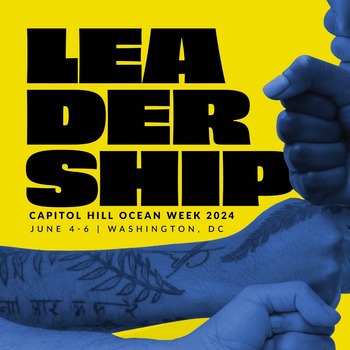 Lean in to leadership at Capitol Hill Ocean Week! (Credit: National Marine Sanctuary Foundation).
Capitol Hill Ocean Week (CHOW) is the nation’s premier ocean and Great Lakes policy conference that convenes policymakers, scientists, managers, business leaders, conservationists, educators, students, and members of the public to engage in dialogue and debate on significant issues that impact our ocean and Great Lakes and to propose innovative policies and partnerships to address these issues. For more information, please visit the National Marine Sanctuary Foundation website.
This year’s theme is Leadership. Speakers and panelists for CHOW include tribal and Indigenous leaders, climate scientists, business and industry innovators, local community leaders, academic researchers, and policymakers. CHOW 2024 is open to the public and free to attendees.
When: June 4-6
Where: Ronald Reagan Building and International Trade Center, 1300 Pennsylvania Avenue Northwest, Washington, DC, 20004
Best for: High School, Educators, Non-Formal Audiences
Applicable Region(s): Mid-Atlantic (Washington, DC)
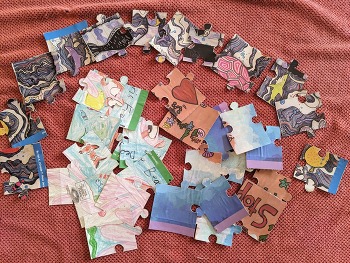 Turn outdated calendar pages into lasting treasures by making them into puzzles. These puzzles feature artwork by K'Moya S. (Grade 3, U.S. Virgin Islands), Ian K. (Grade 7, New Jersey), and Ella K. (Grade 2, Virginia), all winners of the 2022 Marine Debris Program Art Contest (Photo: NOAA).
When you find a calendar you really love, like the annual NOAA Marine Debris Calendar, it can be hard to take it down when the year is over - Especially when the artwork was created by inspiring and thoughtful students from across the country! So, if you have any 2023 calendars (or other artwork you want to save but aren't sure how), and any cardboard cereal boxes, you can turn those materials into a fun and lasting treasure: A jigsaw puzzle!
Piecing it All Together
Supplies Needed:
- Cereal box
- Old calendar pages or other artwork
- Jigsaw puzzle template (I did a quick search for "jigsaw puzzle template" and picked one I thought would be a good size and shape to fit the artwork)
- Clear finishing glue
- Paintbrush or foam brush
- Scissors (safety scissors should work for this project, but remember to exercise caution if you are using sharp scissors like mine)
- Pen or pencil
 Get your supplies together! Since you'll be working with gloopy glue, be sure to lay down a towel or cloth to protect surfaces (Credit: NOAA).
Steps:

1. Lay out your cereal box and find a good placement for your artwork. I found that I could fit three pieces on this large box!
|

2. Use your clear finishing glue to glue the artwork onto the colorful side of the cereal box.
|

Note: You can also modify that step and make a "double sided" puzzle, either with another piece of artwork glued on the plain side, or glue on the plain side (Side A) and use the colorful cereal box side (Side B) for an extra puzzle! This is especially helpful if you (like me) sometimes accidentally glue to the wrong side!
|
 |
|
3. Once the glue is dry, flip the box over so the plain side faces up. Trace the jigsaw puzzle template pieces, being sure to trace over the back of the artwork. |
 |
|
4. Cut out your jigsaw pieces!
|
 The only missing piece here is a clean sea free of marine debris! (Photo: NOAA, Artwork by K'Moya S., Grade 3, U.S. Virgin Islands).
This is a great activity to celebrate the end of the school year, fill an arts and crafts day, or take on the road! I made a few puzzles and packed them into a repurposed plastic berry container to make them convenient to grab and go.
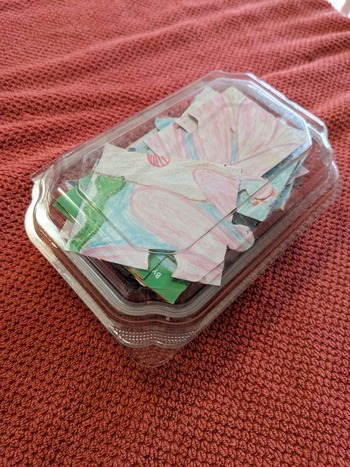 Take your puzzles on the go by repurposing plastic containers for boxes! (Credit: NOAA).
Looking for a craft from a previous newsletter? Check out our NOAA Marine Debris Program Newsletter Archive page to revisit all of our past activities.
Interested in more ways to help prevent marine debris at home, at school, or at the store? Dive into all kinds of ideas on our How to Help page.
Have any feedback on our content?
Contact us at marinedebris.web@noaa.gov if you have any questions, ideas, or hopes for our marine debris materials.
Subscribe to the NOAA Marine Debris Program Education Newsletter
Subscribe to the NOAA Marine Debris Program Monthly Newsletter
Subscribe to the Marine Debris Blog
|